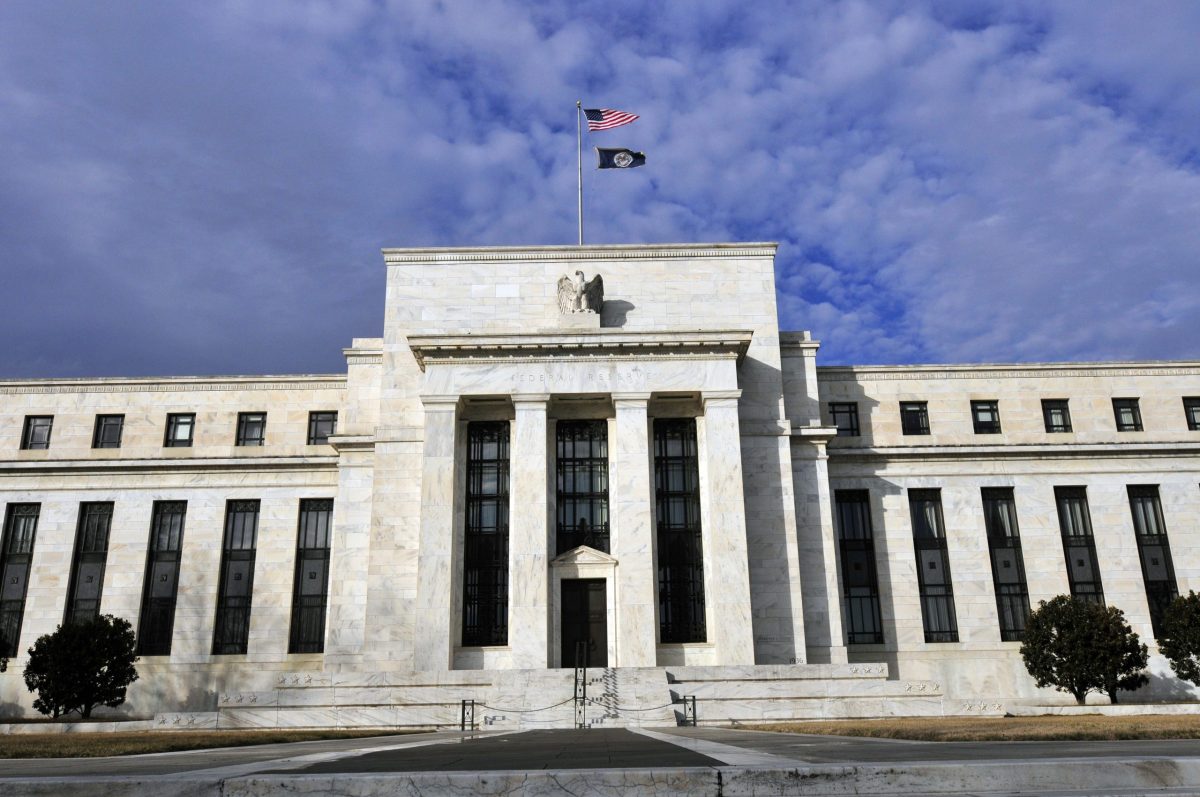Fed Holds Fire on Rates, Signals Cuts Could Arrive if Jobs Falter
18.06.2025 21:30 1 min. read Alexander Stefanov
After wrapping up a two-day policy meeting, the Federal Reserve left its benchmark rate unchanged near 4.4 percent—exactly what markets had penciled in.
Officials offered few clues on timing, but hinted that a weaker labour market or a sharper hit to growth from President Donald Trump’s trade tariffs could tip the balance toward easing later this year.
Most economists still expect at least one trim in the second half of 2025. Wells Fargo’s chief economist Jay Bryson argues that higher import costs are already squeezing demand and may soon lift unemployment enough for the Fed to move.
Fresh staff projections due today are widely anticipated to include a rate-cut scenario.
Complicating matters, Middle-East tensions and domestic political sparring have stoked broader uncertainty.
Trump, who has lambasted Chair Jerome Powell for keeping borrowing costs elevated, is unlikely to be satisfied until cuts materialise—setting the stage for an increasingly delicate balancing act between inflation vigilance and the Fed’s “maximum employment” mandate.
-
1
Jamie Dimon Warns U.S. Risks Losing Dollar Dominance Without Swift Reform
02.06.2025 8:00 1 min. read -
2
Elon Musk Says Congress Is Bankrupting America
04.06.2025 14:00 2 min. read -
3
Trillions in Debt Payments Could Break U.S. Economy, Ray Dalio Predicts
06.06.2025 12:00 1 min. read -
4
Trump Defends Tariffs as Legal Battles and Global Trade Talks Escalate
03.06.2025 21:00 2 min. read -
5
Wall Street Veteran Warns Tariffs Could Disrupt AI-Driven Market Rally
05.06.2025 12:00 1 min. read
Trump Targets Fed Over Missed Rate Cut Opportunity
The fallout from the Federal Reserve’s latest decision to hold interest rates steady has reached the political arena, with U.S. President Donald Trump launching a fierce attack on Chair Jerome Powell.
Fed’s New Projections Hint at a Slower Easing Cycle Through 2026
The Federal Reserve left its target range at 4.25–4.50 percent for a fourth straight meeting and quietly dialed back how much easing it expects through 2026.
UK Inflation Stalls at 3.4%, Spotlight Shifts to BoE’s August Meeting
Britain’s cost-of-living pulse barely budged in May, with headline CPI stuck at 3.4%—the same pace (after correction) seen in April, the Office for National Statistics said on Wednesday.
Billionaire Investor Sees Dollar Crash If Key Support Breaks
Jeffrey Gundlach believes the greenback is tiptoeing along its final line of support. In a recent webcast, the DoubleLine Capital founder highlighted a chart that links the dollar index’s 2011 trough near 72 to its 2021 low around 89.
-
1
Jamie Dimon Warns U.S. Risks Losing Dollar Dominance Without Swift Reform
02.06.2025 8:00 1 min. read -
2
Elon Musk Says Congress Is Bankrupting America
04.06.2025 14:00 2 min. read -
3
Trillions in Debt Payments Could Break U.S. Economy, Ray Dalio Predicts
06.06.2025 12:00 1 min. read -
4
Trump Defends Tariffs as Legal Battles and Global Trade Talks Escalate
03.06.2025 21:00 2 min. read -
5
Wall Street Veteran Warns Tariffs Could Disrupt AI-Driven Market Rally
05.06.2025 12:00 1 min. read


